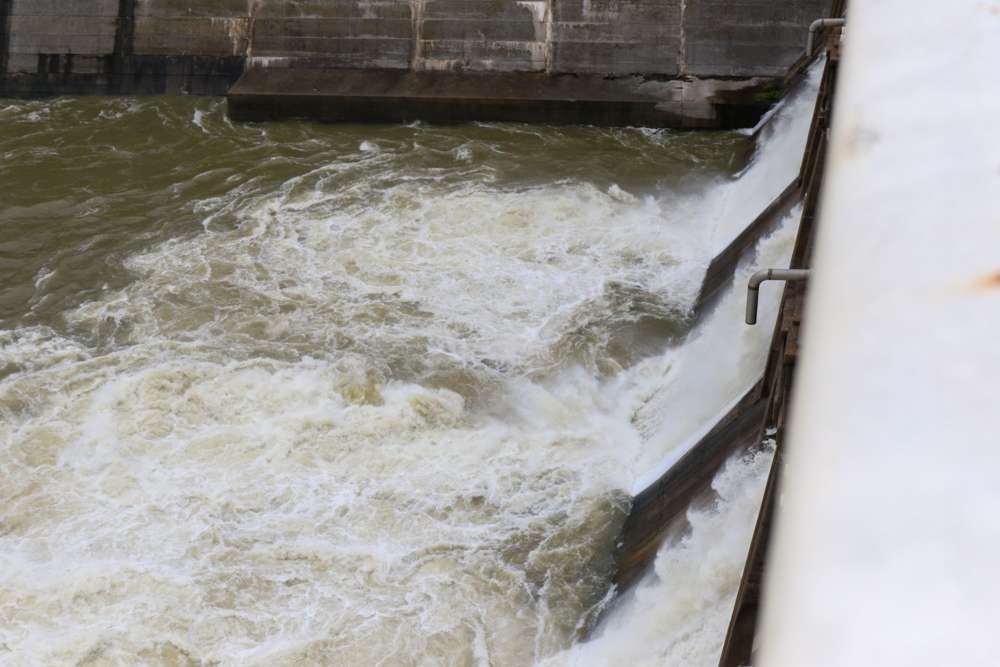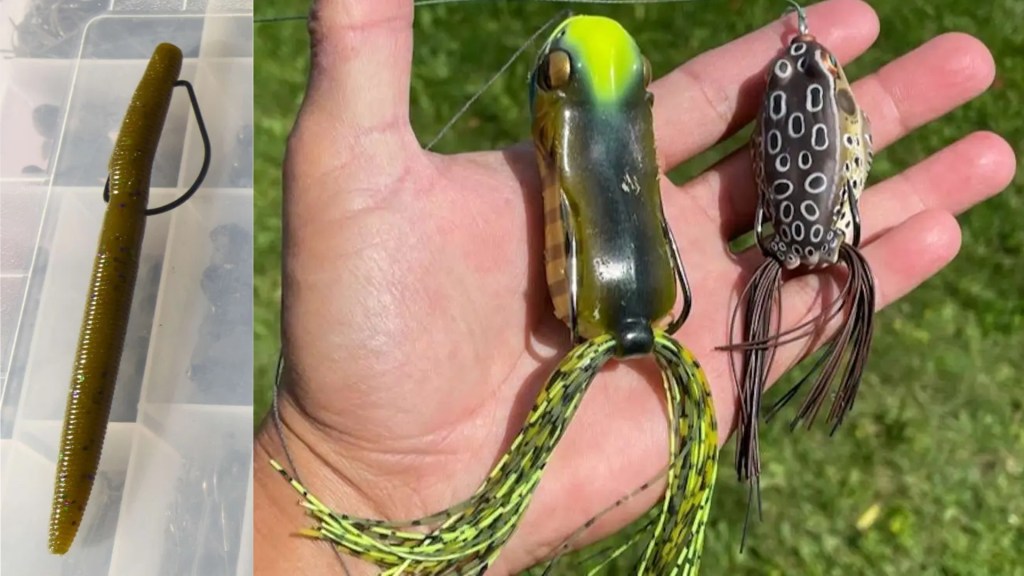
Admittedly, we weren’t cool with getting out-fished, but Bassmaster Elite Series pro Drew Cook and I were targeting something different than the guy who was whacking panfish from atop the spillway. Still, it was hard to deny a little envy for this angler who exemplified one of the most important elements of land-based opportunity — current.
While this angler was dropping into a slack water pocket between the spillway wall and the roiling outflow stream, several other folks had scattered along the pedestrian-friendly structure to cast swimbaits, flukes and topwaters for the bass chasing bait in and around the tailrace. (This was one of those times when multiple user groups shared a resource with respectful casting distances.)
The lesson was clear: You can walk the bank and often pick off a couple of bass here and there, but a few factors will accelerate your opportunity like an area of concentrated current. From land-accessible spillways, to drain pipes, or small feeder creeks, the influx of food, oxygen and a different water color can yield slam dunk potential.
Over the top
Having spent a couple days on the Mississippi River following the season finale 2022 Bassmaster Elite in La Crosse, Wisc., Cook and I were fishing the Onalaska Spillway, where Lake Onalaska — a large body off the main river — dumps into the Black River, which links with the Mississippi. While we enjoyed the mobility advantage, this spot provided a front-row look at how easily land-bound anglers can access quality bass fishing opportunities.
A short walk from the spillway, a woman sat on an overturned 5-gallon bucket positioned on a gravel point as she drifted live bait along the opposite current seam. While most of the flurries occurred within a few boat lengths of the spillway, several bass busted bait 50 yards downstream. I’m sure a fluke, lipless bait or a topwater walker would work there too.
Earlier in the year, I fished the tailrace of a small dam in Madrid, N.Y., a charming hamlet near the St. Lawrence River. A pedestrian overlook provided a safe casting platform, from which I used a drop shot to entice several smallmouth, along with rock bass from current seams.
My biggest bite came when I bomb casted a 3-inch pearl swimbait right into the frothy tailrace and let it drift downstream until an opportunistic smallie blasted the bait behind a current breaking rock.
Lesson: Use the water’s natural force to carry your bait to the kill zone.
Drain on the brain
The network of stormwater pipes that manage rainfall accumulation often brings manmade choke points well within pedestrian reach. From personal experience, I can say a small neighborhood drain, culvert or a simple pipe can be pure gold for anglers on foot.
A bare pipe spewing water into a pond or lake brings plenty of drawing power, but your best spots will have cover or structure to keep fish in the same area year-round. Think riprap, docks and vegetation.
The latter proves particularly important, as it offers shelter, as well as food-rich habitat. Blow some water past a grass line or pad field and it’s showtime.
Generally, it takes a day or so for fish to predictably set up on the current edges. Right after a big rain, the water often blasts so heavily, they can’t effectively feed close to the outflow. Rather, they’ll sit 10 to 15 yards downstream, where the current softens and work their way progressively upstream as the flow moderates.
The main stormwater pipes are larger than the ones linking neighborhood ponds and catch basins, so it often takes a week to work a large volume of water through the system. You’ll start to see patterns develop as fish stake out key spots relevant to current speed.

Options are many, but I carry a hollow body frog and an unweighted Texas-rigged Senko. That one-two punch always delivers.
Even between rain events, the deeper current-carved furrows in front of these drains often hold fish that simply appreciate the subtle depth change. If your angle allows you to whip a bait into the pipe and then work it over the hole — money!





